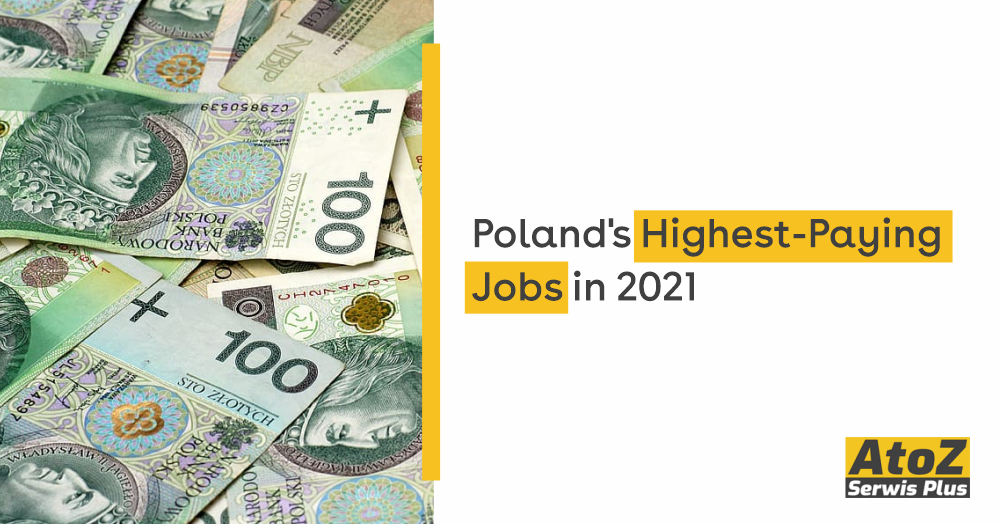

What Will the Minimum Wage Be in Slovakia in 2025?
In 2025, Slovakia’s minimum wage will increase to EUR 4.69 per hour, as the Slovak Labor Code mandated. This wage is reviewed and updated annually by the Regulation of the Government of the Slovak Republic to ensure fair compensation for workers.
The Slovak Labor Code ensures that wages cannot fall below the legally determined minimum wage. This adjustment reflects ongoing efforts to improve living standards and align with economic growth in the country.
This change significantly updates Slovakia’s labour laws for employees and employers. Understanding these updates is essential for workers, business owners, and anyone who wants to stay informed about employment trends.
AtoZ Serwis Plus provides the latest information on minimum wage changes, labour regulations, and employment news in Slovakia and across Europe. Stay connected for reliable updates and insights into the changing job market.
Are you struggling to make ends meet on your current salary in Slovakia? Imagine a future where your paycheck stretches further, allowing you to afford more than just the basics. As we approach 2025, the question on everyone's mind is: What will the minimum wage be in Slovakia?
The answer to this question could dramatically impact your financial well-being and the economy. Staying ahead of the curve is crucial with rising living costs and economic uncertainties. Will the minimum wage keep pace with inflation? How will it compare to other European countries? These are just a few burning questions we'll explore in this blog post.
This post will tell you if you're an employee or employer or simply curious about Slovakia's economic future.
Current Minimum Wage in Slovakia
Overview of 2023 rates
As of 2023, the minimum wage in Slovakia is €700 per month for full-time employees. This rate applies to workers in standard employment relationships who work 40 hours per week. For hourly workers, the minimum wage is €4.023 per hour. It's important to note that these rates are subject to change annually based on various economic factors and government decisions.
|
Employment Type |
Minimum Wage (2023) |
|---|---|
|
Full-time (monthly) |
€700 |
|
Hourly rate |
€4.023 |
Comparison with neighboring countries
Slovakia's minimum wage is competitive within the Central European region, though it varies when compared to its neighbors:
- Czech Republic: €680 per month
- Hungary: €579 per month
- Poland: €745 per month
- Austria: No national minimum wage, but collective agreements set industry standards
This comparison shows that Slovakia's minimum wage is:
- Higher than Hungary's
- Slightly higher than the Czech Republic's
- Lower than Poland's
- Significantly lower than typical wages in Austria
Impact on the Slovak economy
The current minimum wage in Slovakia has several effects on the national economy:
- Increased consumer spending power
- Potential pressure on small businesses
- Attraction of foreign investment due to competitive labor costs
- Improved standard of living for low-income workers
However, it's crucial to balance wage increases with economic growth to maintain competitiveness and prevent job losses. The government must carefully consider these factors when planning future minimum wage adjustments.
Factors Influencing Future Minimum Wage
Economic growth projections
Economic growth is a key factor in determining future minimum wage levels in Slovakia. As the economy expands, there's typically more room for wage increases across all sectors. Let's examine the projected economic growth for Slovakia and its potential impact on the minimum wage:
|
Year |
Projected GDP Growth (%) |
|---|---|
|
2023 |
1.3 |
|
2024 |
2.7 |
|
2025 |
3.1 |
These projections suggest a steady increase in economic growth, which could support a higher minimum wage by 2025.
Inflation forecasts
Inflation plays a crucial role in determining the real value of wages. The Slovak government considers inflation rates when adjusting the minimum wage to maintain purchasing power. Here are some key points about inflation's influence:
- Expected inflation rates for the coming years
- Impact on cost of living and wage demands
- Government's approach to balancing inflation and wage increases
Labor market trends
The state of the labor market significantly impacts minimum wage decisions. Current trends in Slovakia include:
- Unemployment rates and projections
- Skills shortages in certain sectors
- Labor productivity growth
These factors can influence the government's decision on minimum wage levels, as they balance the needs of workers with the capacity of businesses to pay higher wages.
Government policies
Government policies and political priorities play a crucial role in shaping the future minimum wage. Key considerations include:
- Commitments to improving living standards
- Balancing competitiveness with fair wages
- Harmonization with EU labor standards
As we move towards 2025, these factors will interact to shape the minimum wage landscape in Slovakia. Next, we'll explore specific predictions for the 2025 minimum wage based on these influencing factors.
Predictions for 2025 Minimum Wage
Expert opinions and analyses
Leading economists and labor market experts have weighed in on the potential minimum wage in Slovakia for 2025. Most agree that an increase is likely, but the extent of this increase varies among predictions. Some key factors influencing these forecasts include:
- Economic growth projections
- Inflation rates
- Labor market conditions
- Political climate
Here's a summary of expert opinions:
|
Expert Group |
Predicted Increase |
Key Rationale |
|---|---|---|
|
Slovak National Bank |
5-7% |
Moderate economic growth |
|
Ministry of Labor |
8-10% |
Political pressure for higher wages |
|
Independent Economists |
3-6% |
Cautious approach due to global uncertainties |
Potential scenarios (low, medium, high)
Based on expert analyses, we can outline three potential scenarios for the 2025 minimum wage in Slovakia:
- Low scenario: 3-4% increase
- Conservative approach due to economic uncertainties
- Minimal impact on businesses
- Medium scenario: 5-7% increase
- Balanced approach considering both worker needs and business constraints
- In line with projected economic growth
- High scenario: 8-10% increase
- Ambitious approach prioritizing worker welfare
- Potential challenges for smaller businesses
Implications for different sectors
The projected minimum wage increase will have varying effects across different sectors:
- Retail and hospitality: These sectors, which typically employ many minimum wage workers, may face higher operational costs.
- Manufacturing: Increased labor costs could impact competitiveness, potentially leading to automation investments.
- IT and high-skill sectors: Minimal direct impact, but may see pressure to increase wages across all levels.
- Public sector: Budget adjustments may be necessary to accommodate higher wages for lower-paid public employees.
As we move forward, it's crucial to consider how these predictions might shape the Slovak economy and labor market in the coming years.
Effects of Projected Minimum Wage Increase
Benefits for low-income workers
The projected minimum wage increase in Slovakia for 2025 is expected to bring several advantages to low-income workers:
- Improved standard of living
- Enhanced financial stability
- Increased purchasing power
- Better access to essential services
These benefits can significantly impact the quality of life for many Slovaks. Here's a breakdown of the potential improvements:
|
Benefit |
Description |
|---|---|
|
Living standards |
Higher wages allow for better housing, nutrition, and overall well-being |
|
Financial stability |
Increased income provides a buffer against unexpected expenses |
|
Purchasing power |
Workers can afford more goods and services, stimulating the economy |
|
Access to services |
Improved ability to pay for healthcare, education, and transportation |
Potential challenges for businesses
While beneficial for workers, the minimum wage increase may pose challenges for businesses:
- Increased labor costs
- Potential reduction in profit margins
- Pressure to raise prices
- Need for operational efficiency improvements
Small and medium-sized enterprises may face particular difficulties in adapting to the new wage requirements.
Impact on employment rates
The effect of the minimum wage increase on employment rates is complex:
- Short-term: Possible job losses in some sectors
- Long-term: Potential increase in job quality and productivity
- Sector-specific impacts: Varying effects across different industries
Consequences for consumer spending
An increase in the minimum wage is likely to influence consumer spending patterns:
- Higher disposable income for low-wage earners
- Increased demand for goods and services
- Potential boost to local businesses
- Possible inflationary pressure on certain products
These changes in consumer behavior could have ripple effects throughout the Slovak economy, potentially stimulating growth in various sectors.
Preparing for the 2025 Minimum Wage
Advice for employers
As the potential 2025 minimum wage increase approaches, employers should take proactive steps to prepare their businesses:
- Financial planning
- Operational efficiency
- Employee retention strategies
- Compliance measures
|
Strategy |
Description |
|---|---|
|
Budget forecasting |
Project labor costs based on potential wage increases |
|
Process automation |
Invest in technology to streamline operations |
|
Skills development |
Offer training programs to boost productivity |
|
Legal consultation |
Stay informed about upcoming labor law changes |
Tips for employees
Employees can take advantage of the anticipated minimum wage increase by:
- Enhancing skills through training and education
- Negotiating better compensation packages
- Understanding their rights under new labor laws
- Planning personal finances to maximize the benefits of increased income
Potential policy adjustments
To support a smooth transition to the new minimum wage, policymakers may consider:
- Gradual implementation of wage increases
- Tax incentives for businesses adapting to higher labor costs
- Enhanced social safety nets for low-income workers
- Improved monitoring and enforcement of labor regulations
These preparations and policy considerations will help ensure that the 2025 minimum wage change benefits both employers and employees while supporting Slovakia's economic growth. As we move forward, it's crucial to maintain open dialogue between all stakeholders to address challenges and opportunities arising from these wage adjustments.
What Will the Minimum Wage Be in Slovakia in 2025?
As of January 1, 2025, Slovakia's minimum wage structure is as follows:
| Degree of Work Difficulty | Coefficient | Monthly Minimum Wage (€) | Hourly Minimum Wage (€) |
|---|---|---|---|
| 1 | 1.0 | 816 | 4.69 |
| 2 | 1.2 | 932 | 5.36 |
| 3 | 1.4 | 1,048 | 6.02 |
| 4 | 1.6 | 1,164 | 6.69 |
| 5 | 1.8 | 1,280 | 7.36 |
| 6 | 2.0 | 1,396 | 8.02 |
These rates are determined based on the degree of work difficulty, with higher coefficients applied to more demanding roles. The monthly minimum wage for the first degree of work difficulty is €816, corresponding to an hourly rate of €4.69. Each subsequent degree increases the wage proportionally, as indicated in the table above.
Minimum Wage in Slovakia for 2025: What You Need to Know
-
Minimum Wage in 2025
Starting from January 1, 2025, Slovakia's minimum wage has been set at €816 per month, an increase from €750 in 2024. -
Minimum Wage Increase
This change represents an 8.8% increase compared to the previous year, reflecting the government's commitment to improving living standards. -
Minimum Hourly Rate Increase
The minimum hourly wage has risen from €4.31 to €4.69, providing a noticeable boost for hourly workers across various sectors. -
Gross vs. Net Increases: How Much Will You Really Get?
While the gross minimum wage stands at €816, the net amount (the take-home pay after taxes and social contributions) will be lower. The exact net wage will vary depending on individual circumstances such as tax deductions and social security contributions. -
What Else Will Change?
In addition to wage increases, new regulations require employers with more than 49 employees to contribute towards the sports activities of employees' children. This contribution covers 55% of eligible expenses, up to €275 per calendar year for all children of an employee. -
What Awaits Us in 2026?
Starting in 2026, the Slovak government plans to adjust the minimum wage to 60% of the national average wage. Based on current projections, this could result in the minimum wage rising to approximately €920 in 2026 and €970 in 2027. -
Minimum Wage Structure by Job Difficulty
Slovakia uses a six-level job difficulty structure to determine minimum wages:
- Level 1: Coefficient 1.0 – €816 per month
- Level 2: Coefficient 1.2 – €979 per month
- Level 3: Coefficient 1.4 – €1,142 per month
- Level 4: Coefficient 1.6 – €1,305 per month
- Level 5: Coefficient 1.8 – €1,469 per month
- Level 6: Coefficient 2.0 – €1,632 per month
These changes signify the Slovak government's ongoing efforts to enhance workers' living standards and ensure fair compensation across different sectors. Employers and employees alike should stay informed about these updates to understand how they will impact wages and workplace regulations in the coming years.
What Will the Minimum Wage Be in Slovakia in 2025? – Top FAQs Answered
1. What is the minimum wage in Slovakia for 2025?
The minimum wage in Slovakia for 2025 is expected to be €750 per month, up from €700 in 2024. This increase reflects adjustments to inflation and the cost of living.
2. Is the minimum wage the same for all workers in Slovakia?
No, the minimum wage varies based on job complexity. Slovakia has a six-level grading system, where more demanding jobs can earn up to double the basic minimum wage.
3. How is the minimum wage determined in Slovakia?
The government sets the minimum wage each year after negotiations with trade unions and employers' associations, considering inflation, average wages, and economic growth.
4. What is the hourly minimum wage in Slovakia for 2025?
The hourly minimum wage for 2025 is projected to be around €4.32 per hour.
5. Are there any deductions from the minimum wage in Slovakia?
Yes, income tax and social insurance contributions (covering health, pension, and unemployment) are deducted, reducing the net take-home pay.
6. Is the minimum wage in Slovakia enough to cover living expenses?
While the minimum wage can cover basic living expenses in smaller towns, it may be challenging to live comfortably in major cities like Bratislava due to higher living costs.
7. Do foreign workers receive the same minimum wage as Slovak citizens?
Yes, foreign workers are entitled to the same minimum wage as Slovak citizens, as per Slovak labor laws.
8. How does Slovakia's minimum wage compare to other EU countries?
Slovakia’s minimum wage is mid-range compared to other EU nations, higher than in Hungary and Bulgaria, but lower than in Western European countries like Germany and France.
9. Are bonuses and overtime included in the minimum wage?
No, bonuses and overtime pay are separate from the minimum wage, offering additional compensation beyond the base salary.
10. Can employers pay less than the minimum wage in Slovakia?
No, it is illegal for employers to pay less than the statutory minimum wage. Violations can result in penalties and legal action.
Conclusion:
Slovakia's minimum wage trajectory is set for significant changes leading up to 2025. The projected increase reflects the country's commitment to improving living standards and addressing economic challenges. While the exact figure remains uncertain, various factors including economic growth, inflation rates, and political decisions will play crucial roles in determining the final amount.
As we approach 2025, both employers and employees should stay informed about these developments. Businesses may need to adjust their financial planning and operational strategies, while workers can anticipate potential improvements in their financial situations. Ultimately, the evolving minimum wage landscape in Slovakia underscores the importance of adaptability and proactive planning in the face of economic change.





